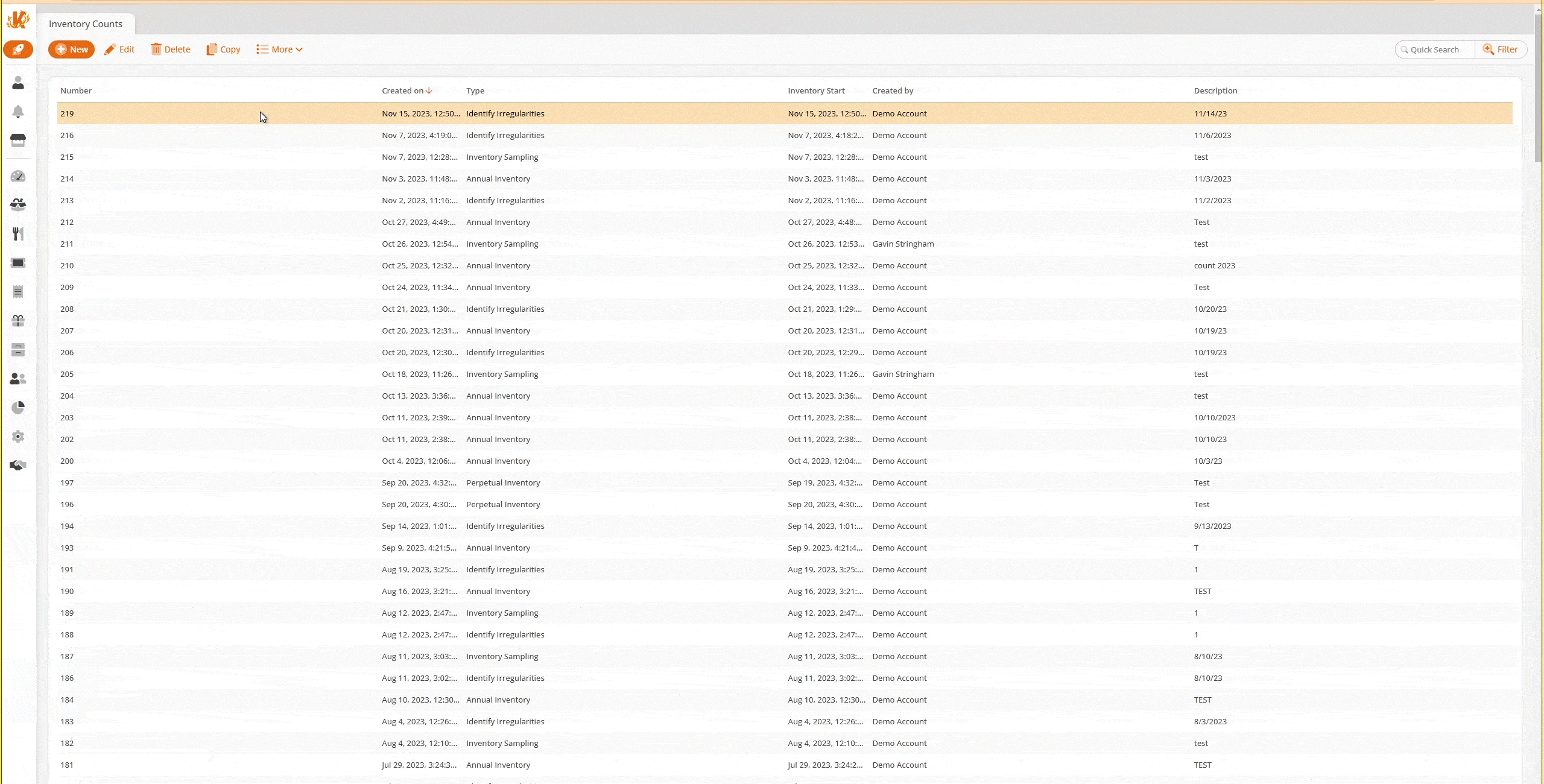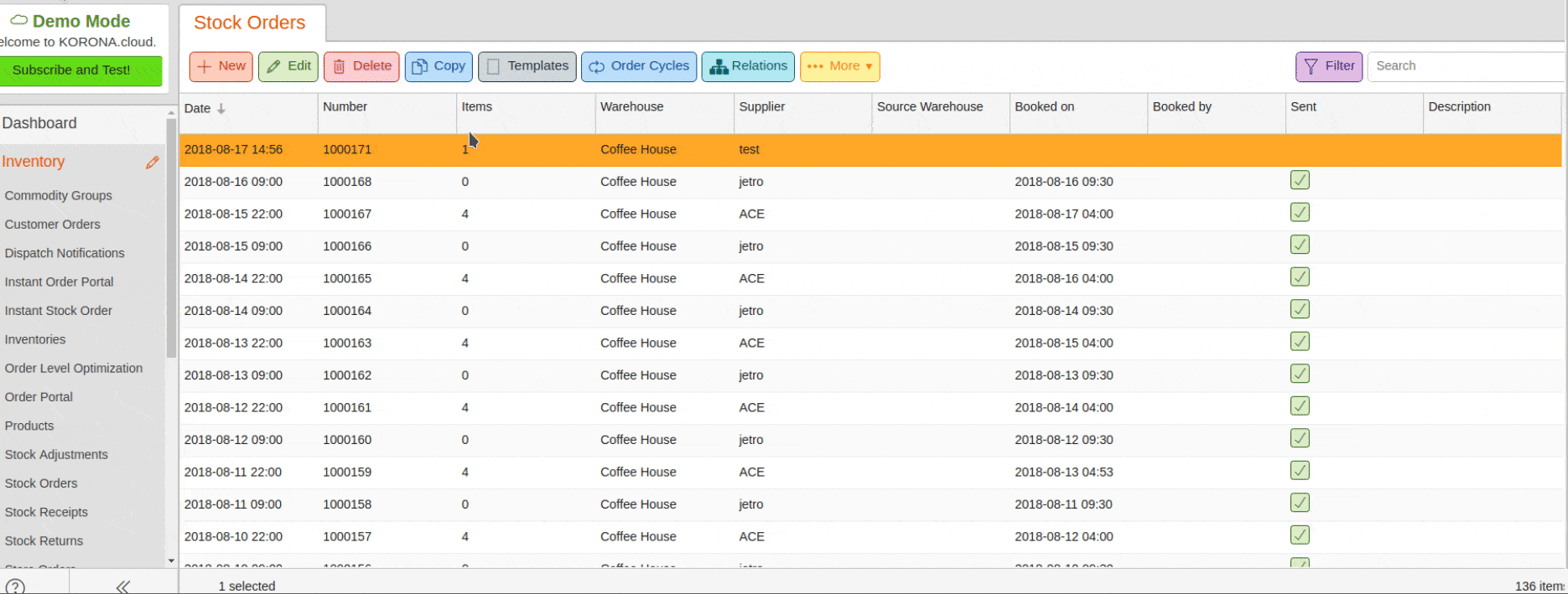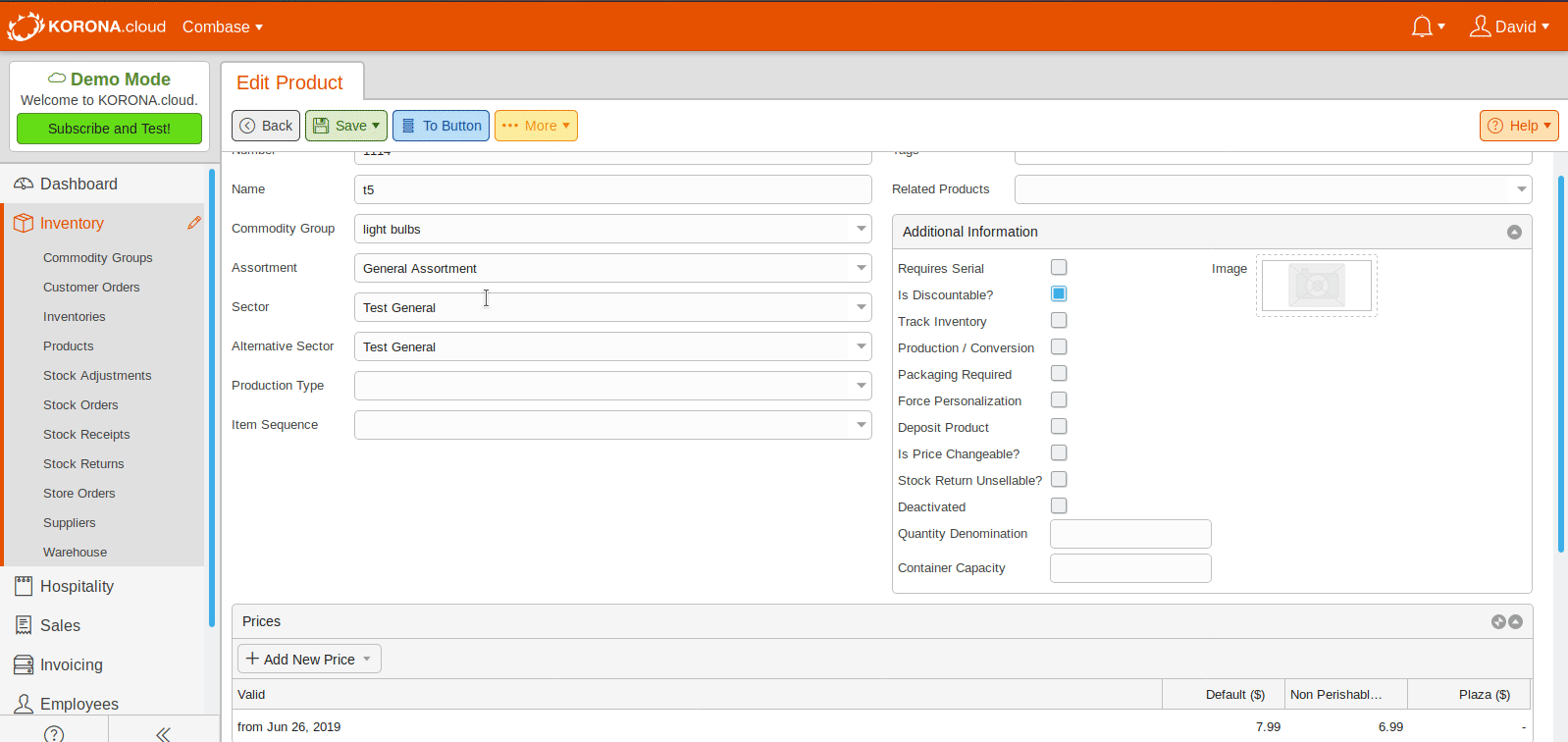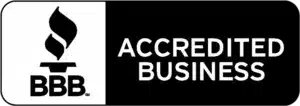Frequently Asked Questions
Get your questions answered with our top FAQs.
Accounts & Security
Resetting your password and changing your email in KORONA POS is simple.
If you forgot your password or need to reset it, go the KORONA Studio login screen and click the "Forgot Password?" link.
To change your email, log into KORONA Studio and navigate to My User Account in the menu, then click Request Email Change and fill out the form.
Sales data for active accounts is stored for 10 years.
Inactive accounts can be accessed for up to 12 months after the account has expired.
As you may have noticed, a small green icon next to the keyboard icon sometimes appears on the upper right margin, followed by a yellow round icon.
Both symbols display the update process of the KORONA POS software.
When you see the first green icon with the loading arrow, the POS has downloaded the latest version from the cloud.
To perform the update, press the yellow icon. The POS then reboots and executes the update.
See Images
If you don’t see the widgets on the front page of the cloud, the permissions are missing, and you do not have the right to display organizational units.
If you are allowed to change user roles, you can set the right permissions under:
Employees > User Roles > Edit Roles > Settings > Organizational Units > List Organizational Units.
If you cannot edit user roles, don’t hesitate to contact your manager or supervisor, who can edit the role for you or permit you to do so yourself.

Discounts and Promotions
Price rules and promotions do not have an option to exclude certain products.
However, you do have the following options to exclude certain items:
- Disable the product setting Is Discountable. Please be aware that this option will not allow the item to be discounted at all and will exclude the item from all price rules.
- Set up a promotion tag that includes all items you would like to discount except the ones you would like to exclude.
The deviation, which is usually no more than one to four cents, is that the discount on the individual items must be divided evenly.
Here is a small example:
You have three items on the receipt and give a receipt discount of $1, In this case, you can not split one dollar on 3 items: $1 / 3 = 0.333333…
This means that the cash, in this case, must be round, which results in only a 0.99 discount instead of a dollar.
Check to see if the product is eligible and review your promotion to ensure you have set up the correct tag, date, and customer group. See here for more information.
Hardware
The printer icon is gray, so printing is turned off, but some receipts still print:
Deactivating the printer from the POS is only for normal transactions. Reprints and voided transactions will print no matter what. When the receipt printing is disabled, automatic receipt printing will also occur in the following cases:
- Balance
- Reports
- End of day
- Cancelled receipts
- Returns
- If a promotion triggers a coupon (this can also happen even if the promotion is set for immediate discount in case the trigger applies but the discount can’t be applied)
- Gift card transactions (only the balance remaining receipt for the gift card will be printed)
- When the payment method forces printing (credit cards, gift cards)
- If a production type is set up (kitchen, ticket or gift cards)
- Clock in and Clock out slips from Time Tracking Entries
A PAX Communication Error occurs when the terminal cannot send payment data to the PAX Device for processing. One of the main reasons for this error is that the PAX IP Address has not been set in the POS Profile Page.
See how to fix it here.
See how to manually batch your PAX S300, Android PAX devices (A60, A80, A920) or Dejavoo credit devices (Z11, Z8, Z-series) here.
Test your PAX S300,Genius Payment Terminal, Pax A35, Dejavoo DJV Z11, or Blockchyp devices here.
Inventory Management
No, internal orders do not affect the current and the last purchase price since these two values would be distorted by internal goods movements.
There could be several reasons the inventory count is wrong, such as: inventory tracking, sales not syncing or wrong warehouse assignments. Troubleshoot here.
To set all inventory counts to zero create an annual inventory count by navigating to Inventory > Inventories. To learn more about creating inventory, please refer to our Inventory manual page.
Once your inventory is created, select the Organizational Units you wish to set Zero Counts for and click on the Edit Inventory Count List. On the following page, click Book.
A ‘Validate Inventory Count‘ page should launch. Locate the Actions for Missing Entries drop-down menu and choose ‘Set Zero for Actual Goods.’ Once done, click Book. This should amend all products within this Warehouse/Organizational Unit to a Zero Count.

If you are using the order portal to create new stock orders and you do not see your newly created stock order on the list, this is due to an already open stock order for that same supplier.
If there is an existing unbooked stock order, the system will update the open order rather than create a new one. All open stock orders must be finalized and/or deleted for a new stock order to show on the list.
For example, below there is an open order for the supplier Test. We ordered the item 0.2Pack using the order portal. Notice how the quantity on the existing order for the supplier Test changes from 1 to 2.

Firefox has an issue that causes reduced resolution for PDF labels. A setting within Firefox can resolve this issue. Navigate to the print settings in Firefox, go to Image Quality and change it from 600dpi to HQ1200dpi.
This will update the resolution and quality of your PDF label.

POS Functions
Point of sale buttons can be created a couple of different ways in KORONA Studio or at the POS. See this guide here on how to do so.
Yes, you can temporarily use the POS Terminal without connecting to the cloud. Please note, however, that certain functions only work with an active connection to the cloud.
These features include (depending on the packages on the account):
- Retrieving Master Data.
- Transferring sales data to the cloud.
- Creation, balance checking, and payments made with prepaid/gift cards.
- Inventory receipts, such as inventory counts, stock receipts, and order requests.
- Create, edit and search for customer orders, offers, rentals, and delivery notes.
- Creating and picking up customer orders.
- The creation of, searching or retrieving of customer data.
- External system calls / API.
- Event ticket sales.
POS functions are preset point of sale functions such as product search, change quantity, customer lookup, and more. View this guide providing an overview of available POS button functions.
Products
The current profit margin for product prices is determined by the difference between the retail price and the last purchase price.
The last purchase price can be found in the Edit Product screen. It is automatically updated if you book a Stock Order or Stock Receipt.
Profit margins are calculated using the actual sales price, which includes item discounts and the average purchase price at the time of sale for the warehouse from which the item was sold. If, at the time of sale, you also have an additional cost set up in the product settings, this cost will be added to the purchase price.
You can review the average purchase price under Inventory > Warehouses.
If you need to correct the average purchase price, you can do that by performing an inventory count under Inventory > Inventories.
To find products without suppliers you can create a store order under Inventory > Store Orders and click +New. Then change the source from Product to Assortment, and from there you can select general assortment, which will add all the products to your store order. After you have clicked Save, then export to Excel, the store order sorts products by supplier, so you are able to find out what product does not have a supplier in the Excel document. This automatically filters products without suppliers to the top of the list. See more here.
A Deactivated product removes it from being sold. A Delisted product can still be sold but will not be recommended for reorder. See how to deactivate or delist a product here.
Here is our most common payment processor contact information.
Transactions
This message displays when the cashier is trying to process a transaction using more than the total amount displayed on the point of sale terminal using the selected payment method. To stop this popup, you must allow that payment method to process more than the total. Go to the payment methods screen by navigating to Settings > Payment Methods.
Select the payment method you need to change and click on the edit button. Once inside the payment method edit screen, tick the “change due” checkbox and click save. Make sure you retrieve master data on all points of sale terminals that are using that payment method. You will now be able to process amounts greater than the total receipt for that payment method.

If you load KORONA POS on a tablet, the receipts prices may be cut off from the preview. This is because the display size of the fonts is set too high.
To fix this, you will need to access your font size settings and decrease the size of your fonts. Follow this guide to reduce the font size.
Settings

To clarify how taxes are calculated on your receipts, let us look at an example:
Initial situation: You have 5 items. Each of these items has a net price of $0.99 and is taxed at a rate of 19%, each of which corresponds to a gross amount of $1.18 ($0.99 * 1.19 = $1.1781 rounded to $1.18). There are two legally accepted procedures to calculate the value-added tax:
- The net amounts are added together on the receipt, and the tax is then applied to the sum: ($0.99 * 5) * 1.19 = $5.8905 rounded to $5.89.
- The tax is calculated based on the posting method, rounded, and then added together: ($0.99 * 0.19) * 5 = $5.90
The checkout uses the first method, which typically makes things easier for taxes and accounting. Most tax collection agencies will take a gross total and multiply that by the tax rate. Using the first method will typically match up with what the reporting agency expects. When you have items with multiple tax rates, the items are grouped together, and that amount is rounded per tax rate.
To get full directions on how to set up your taxes, please refer to our Tax Set Up Page.
User roles are a way to manage and control permission for any KORONA Studio user. Here, you can block certain users from viewing and editing sensitive functions and reports. This page will list all known available user roles.
If you attempt to save information within a text field (coupon text, receipt header, receipt footer, etc.) and it disappears afterward, please check your browser extensions.
There is a known issue with the popular extension Grammarly. Please disable it for koronacloud.com.

Didn't find what you need help with?
Search more articles below or contact support.


